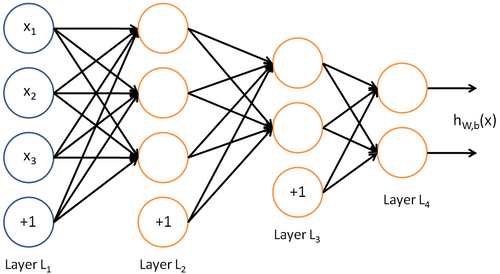python3 输入输出csv文件的2种形式
1 |
|
blogs/notes/readings
1 |
|
Github地址:https://github.com/dedupeio/dedupe
Dedupe,基于python的ER工具包。结合试用机器学习、主动学习等技术在结构化数据集上实现快速去重(de-duplication)和实体识别(entity resolution)。
Github地址:https://github.com/dice-group/LIMES
为Entity linking设计的框架,支持超大规模级实体链接。
[heart_scale_label, heart_scale_inst] = libsvmread('heart_scale');
model = svmtrain(heart_scale_label, heart_scale_inst, '-c 1 -g 0.07 -b 1');
[predict_label, accuracy, prob_estimates] = svmpredict(heart_scale_label, heart_scale_inst, model, '-b 1');
label:n*1
data:n*d
参考http://blog.csdn.net/chensheng312/article/details/73195158
问题1: 未找到支持的编译器或 SDK。您可以安装免费提供的 MinGW-w64 C/C++ 编译器;请参阅安装 MinGW-w64 编译器。有关更多选项,请访问
http://www.mathworks.com/support/compilers/R2016a/win64.html
解决方案:http://blog.csdn.net/desire121/article/details/60466845
1.新建环境变量 MW_MINGW64_LOC,设置为TDM-GCC-64的安装位置(‘D:\mingw-w64\mingw-w64\x86_64-4.9.2-posix-seh-rt_v3-rev1\mingw64\’),路径最后不要加bin
2.在MATLAB环境下执行setenv(‘MW_MINGW64_LOC’,folder)。folder为TDM-GCC的安装位置,要加单引号;
3.重启MATLAB
mex -h
mex CFLAGS="\$CFLAGS -std=c99" -largeArrayDims libsvmread.c -v
使用 -v 参数展示详细模式,可以看到需要查找的编译器
问题2: gcc: error: -fexceptions: No such file or directory
解决方案:https://github.com/cjlin1/libsvm/issues/55
将make.m文件下的所有的CFLAGS都替换成COMPFLAGS
Tutorial of Unsupervised Feature Learning and Deep Learning by Andrew Ng
一阶导数为:$f’(z) = f(z)(1-f(z))$
\begin{equation}
f(z) = \tanh(z)=\frac{e^z-e^{-z}}{e^z+e^{-z}}
\end{equation}
一阶导数为:$f’(z) = 1-(f(z))^2$

input layer $\to$ hidden layer $\to$ output layer
每层的神经元数量不计bias unit(bias unit对应intercept term,y=Wx+b 中的b)
设神经网络有$n_l$层,则图中 input layer (记为$L_1$,3 input units) $\to$ hidden layer ($L_2$,3 hidden units; $L_3$,2 hidden units) $\to$ output layer (记为$L_{n_l}$,2 output units)
第$l$ 层对应的参数为$W^l,b^l$,则
\begin{equation}
z^{l+1} = W^l a^l+b^l
\end{equation}
\begin{equation}
a^{l+1} = f(z^{l+1})
\end{equation}
$a^{l+1}$是一个向量,代表第$l+1$层的activation。其中$a^1$是输入x,$a^{n_l}$为输出y
feedforward neural network, the connectivity graph does not have any directed loops or cycles
反向传播算法从输出层开始,反向计算每个节点的残差,并用这些残差计算代价方程对每一个参数的偏导数。
Deep feedforward networks, 也称 feedforward neural networks, 或 multi-layer perceptrons (MLPs)。
MLP用来近似函数,信息从x,经过中间层计算,最后到y。 如果一个扩展feedforward neural networks,使它包含feedback,则称为recurrent neural networks
方法:
参考深入理解拉格朗日乘子法(Lagrange Multiplier) 和KKT条件
拉格朗日乘子法(Lagrange Multiplier)和KKT(Karush-Kuhn-Tucker)条件是求解约束优化问题的重要方法。首先用等式约束和不等式约束来描绘集合$\mathbb{S}$。在有等式约束时使用拉格朗日乘子法,在有不等约束时使用KKT条件(KKT条件是拉格朗日乘子法的泛化)。只有当目标函数为凸函数时,使用这两种方法才保证求得的是最优解。
无约束优化问题
有等式约束的优化问题
\begin{align}
\min & ~ f(x) \nonumber \\
s.t. & ~ h_i(x) = 0, i=1,…,m \label{problem_math}
\end{align}
Fermat定理,即使用求取f(x)的导数,然后令其为零,可以求得候选最优值,再在这些候选值中验证;如果是凸函数,可以保证是最优解。
拉格朗日乘子法(Lagrange Multiplier) ,即把等式约束$h_i(x)$用一个系数与$f(x)$写为一个式子,称为拉格朗日函数,而系数称为拉格朗日乘子。通过拉格朗日函数对各个变量求导,令其为零,可以求得候选值集合,然后验证求得最优值。
the generalized Lagrangian or generalized Lagrange function is:
或向量形式
这里把$\alpha$和$h(x)$视为向量形式,$\alpha$是横向量,h(x)为列向量
求解方法:对Lagrangian函数分别对$\alpha$ 和 $x$ 求导数,并令导数为0,得到$\alpha$ 和 $x$
引入KKT multipliers,$\alpha$和$\lambda$,其中,$\alpha_i \ne 0$, $\lambda_j \ge 0$
向量形式:
KKT条件是说最优值必须满足以下条件:
原理推导看拉格朗日乘子法和KKT条件
update estimates of the solution via an iterative process (通过迭代过程逐步逼近解,而analytically deriving a formula providing a symbolic expression for the correct solution.)
rounding error:数值在计算机中存储时产生精度方面的误差,包含
因此设计函数时要求 be stabilized against underflow and overflow
输入的微小变化会引起计算结果的剧烈变化,即Poor Conditioning。
考虑$AX=b$,如果系统的解对系数矩阵A或b太敏感,(一般系数矩阵A和b是从实验数据里面估计得到,存在误差),方程组系统就是ill-conditioned。否则就是well-condition系统。
condition number:衡量ill-condition系统的可信度,衡量输入发生微小变化时,输出会发生多大的变化。也就是系统对微小变化的敏感度。
(L2范数有助于处理 condition number不好的情况下矩阵求逆很困难的问题)。
如果方阵A非奇异,则condition number定义为:
\begin{equation}
\kappa (A) = ||A|| ||A^{-1}||
\end{equation}
如果方阵A奇异,那么A的condition number正无穷大.
设函数$f(x) = A^{-1}x$, 方阵有特征分解。则condition number为:
\begin{equation}
\kappa (A) = \max_{i,j} |\frac{\lambda_i}{\lambda_j}|
\end{equation}
条件数即 the ratio of the magnitude of the largest and smallest eigenvalue.
Jacobian矩阵和Hessian矩阵 写得很好。
假设$f: R^n \to R^m$是一个从欧式n维空间转换到欧式m维空间的函数. 这个函数$f(x) \in \mathbb{R}^m$由m个实函数组成: $f_1(x_1,…,x_n), …, f_m(x_1,…,x_n)$. 这些函数的偏导数(如果存在)可以组成一个m行n列的矩阵, 这就是所谓的雅可比矩阵:
(这个矩阵的第i行是由梯度函数的转置$f_i(i=1,…,m)$表示的)
the Hessian is the Jacobian of the gradient
(我的理解是对雅可比矩阵的某一行再做一次雅可比)
设函数$f(x_1,x_2,…,x_n)$,如果$f$的所有二阶导数都存在, 那么$f$的海森矩阵即:
Hessian matrix is real and symmetric,we can decompose it into a set of real eigenvalues and an orthogonal basis of eigenvectors.
二阶导数用于判断函数critical point是否极大值/极小值:(一阶导数$f0(x) = 0$的点为 critical points 或 stationary points)
多维情况下,使用Hessian matrix的特征分解:
When the Hessian has a poor condition number, gradient descent performs poorly. 使用Hessian matrix to guide the search,最简单的一种是Newton’s method(基于2阶形式的泰勒展开)
弱限制条件:限制函数满足Lipschitz continuous or have Lipschitz continuous derivatives. quantify our assumption that a small change in the input made by an algorithm such as gradient descent will have a small change in the output.
强限制条件:Convex optimization. 只能应用于convex functions—functions for which the Hessian is positive semidefinite everywhere. 在deep learning中使用率不高。